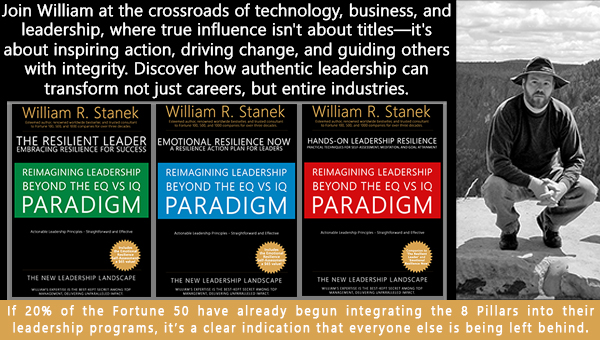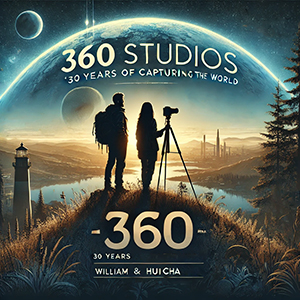A Legacy of Light and the Art of Illumination
(May 9, 2025)

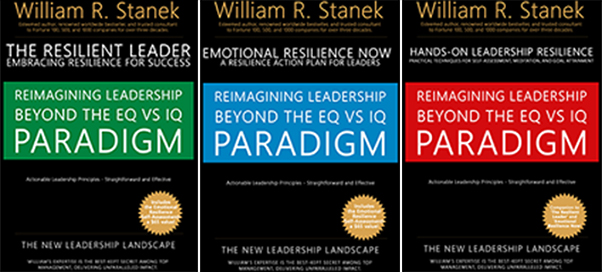
Join William at the crossroads of technology, business, and leadership, where true influence isn't about titles - it's about inspiring action, driving change, and guiding others with integrity. Discover how authentic leadership can transform not just careers, but entire industries.
Discover William Stanek's Exclusive Art Collection
Explore and purchase the stunning art featured on this site. Own a piece of William Stanek's unique and captivating artwork today!
A Legacy of Light & the Art of Illumination
In the world of photography, light is the essence of every image, the brushstroke that defines mood, texture, and depth. For William Stanek, natural light is not just a tool but a powerful force that breathes life into his work, transforming ordinary scenes into extraordinary pieces of art. This article delves into William’s mastery of natural light, exploring how he captures its various forms—from the soft glow of the golden hour to the stark contrasts of midday sun—and uses it to create images that resonate deeply with viewers.
The Art of Illumination: William’s Philosophy on Natural Light
William Stanek’s approach to photography is deeply rooted in his understanding and appreciation of natural light. He views light not just as an element of photography but as a subject in itself. According to William, light is the storyteller, the element that conveys the emotional and narrative depth of an image. His philosophy centers on the belief that natural light has the power to transform even the most mundane scenes into something profound and beautiful.
This philosophy is evident in William’s work, where light plays a central role in defining the mood and atmosphere of each photograph. Whether it’s the warm, inviting tones of the golden hour or the dramatic contrasts of a stormy sky, William’s images capture the essence of light, revealing its ability to evoke emotions and tell stories.
Golden Hour Magic: Capturing the Warmth of Early Morning and Late Afternoon
The golden hour, that fleeting time just after sunrise and before sunset, is often considered the holy grail of natural light photography. During this time, the sun casts a warm, golden glow that softens shadows and adds a magical quality to the landscape. For William, the golden hour is a favorite time to shoot, as it allows him to capture scenes bathed in a light that is both soft and rich in color.
William’s golden hour photography is characterized by its warm tones and the way light interacts with the environment. He often seeks out locations that will be illuminated by the low-angle sunlight, creating long shadows and highlighting textures that might be lost during other times of the day. His images from this period often exude a sense of calm and tranquility, inviting viewers to bask in the gentle warmth of the scene.
To maximize the potential of golden hour light, William carefully plans his shoots, often scouting locations in advance to determine the best angles and compositions. His understanding of how light changes during this time allows him to work quickly and efficiently, capturing the fleeting moments when the light is at its most beautiful.
Twilight and Blue Hour: The Subtle Elegance of Dusk
As the sun dips below the horizon, the golden hour gives way to twilight and the blue hour—a time when the sky takes on deep, saturated hues of blue and purple. This transition period, often overlooked by many photographers, is a time of subtle, elegant light that William has mastered in his work.
Twilight and blue hour light is soft and diffused, lacking the harsh contrasts of midday sun. This makes it ideal for capturing scenes with a serene, almost ethereal quality. William often uses this time to photograph landscapes, cityscapes, and seascapes, where the cool tones of the sky can enhance the mood of the image.
One of William’s key techniques during this time is to use long exposures, which allow him to capture the remaining ambient light and create a sense of motion in the sky and water. This approach not only highlights the tranquil nature of the scene but also adds a dreamlike quality to his images, making them feel both timeless and otherworldly.
Harnessing the Harsh: The Power of Midday Sun
While many photographers shy away from shooting during the harsh midday sun, William sees it as an opportunity to explore a different kind of light. Midday sun, with its strong, direct rays, creates deep shadows and high contrast, presenting unique challenges and creative possibilities.
William’s approach to photographing under the midday sun involves embracing the light’s intensity rather than fighting it. He often uses the strong contrasts to his advantage, creating images with dramatic lighting that emphasizes textures and forms. This is particularly effective in architectural photography, where the sharp angles and lines of buildings are accentuated by the stark light.
In nature photography, William uses midday sun to highlight the textures of rocks, sand, and foliage, creating images that are rich in detail. His ability to work with this challenging light is a testament to his technical skill and his understanding of how different types of natural light can be used to enhance a scene.
The Drama of Storm Light: Capturing the Moment Before the Storm
One of the most dramatic forms of natural light occurs just before or after a storm. The sky darkens, the light becomes more intense, and the atmosphere is charged with energy. For William, this is a time of great creative potential, as the changing light can transform a landscape into something truly extraordinary.
William’s storm photography is marked by its intensity and the way he captures the fleeting moments of light amidst the dark clouds. He often seeks out locations where the contrast between the stormy sky and the illuminated landscape is most pronounced, creating images that are both powerful and dramatic.
In these situations, timing is crucial. William must work quickly to capture the light before it disappears, often battling the elements to get the shot. His ability to anticipate the changes in light and react swiftly is a key factor in his success in capturing these dramatic moments.
Backlighting and Silhouettes: The Art of Creating Depth
Backlighting, where the light source is behind the subject, is a technique that William uses to create depth and drama in his images. This approach often results in striking silhouettes, where the subject is rendered in shadow against a brightly lit background.
William’s backlit photographs are characterized by their strong contrasts and the way they play with light and shadow. He often uses this technique in landscape photography, where the sun sets or rises behind a mountain range or a row of trees, creating a silhouette that adds a sense of mystery and scale to the image.
In addition to landscapes, William also uses backlighting in portrait photography, where the subject is illuminated from behind by natural light. This creates a halo effect that adds a sense of depth and dimension to the image, making the subject stand out against the background.
Reflections and Refractions: Playing with Light on Water
Water is a natural reflector, and William often uses this property to create images where light plays a central role. Whether it’s the reflection of a sunset on a calm lake or the refraction of light through the waves of the ocean, William’s photographs capture the beauty of light as it interacts with water.
One of William’s favorite techniques is to use long exposures to capture the movement of water, allowing the light to blur and create a sense of motion. This technique is particularly effective during the golden hour or blue hour when the light is soft and the colors are rich.
In addition to reflections, William also explores the way light refracts through water droplets, ice, and other natural elements. These images often have a surreal quality, as the light is bent and distorted in unexpected ways, creating patterns and colors that are both beautiful and intriguing.
The Interplay of Light and Shadow: Creating Contrast and Texture
The interplay of light and shadow is a fundamental aspect of William’s photography. By carefully controlling the balance between the two, he creates images that are rich in contrast and texture, adding depth and dimension to the scene.
William’s approach to light and shadow is evident in his black and white photography, where the absence of color emphasizes the tonal contrasts. In these images, the light defines the form, while the shadows create a sense of mystery and intrigue. His use of light and shadow is particularly effective in architectural photography, where the lines and angles of the buildings are accentuated by the sharp contrasts.
In addition to black and white photography, William also uses light and shadow to create contrast in his color images. By placing the subject in the light and allowing the background to fall into shadow, he draws the viewer’s eye to the focal point of the image, creating a sense of depth and focus.
Capturing the Ephemeral: The Challenge of Changing Light
Natural light is constantly changing, and one of the biggest challenges in photography is capturing the ephemeral moments when the light is just right. For William, this challenge is part of the allure of working with natural light, as it requires both patience and quick reflexes to capture the perfect shot.
William often spends hours waiting for the light to change, whether it’s the first rays of dawn breaking over the horizon or the last light of day fading into twilight. His ability to anticipate the changes in light and react quickly is a key factor in his success as a photographer.
In addition to waiting for the right light, William also experiments with different angles and compositions to capture the light in unique ways. He often revisits the same location at different times of day or in different weather conditions, capturing the changing light and the different moods it creates.
A Legacy of Light: William’s Contribution to Photography
William Stanek’s mastery of natural light has left a lasting legacy in the world of photography. His ability to capture the beauty of light in all its forms—from the soft glow of the golden hour to the dramatic contrasts of storm light—has set a standard for excellence in the field.
Through his work, William has shown that natural light has the power to transform ordinary scenes into extraordinary works of art. His photographs are a testament to the beauty of the natural world and the role that light plays in shaping our perception of it.
William’s contribution to photography extends beyond his technical skills. His work has inspired countless photographers to explore the possibilities of natural light and to see the world in a new way. By capturing the essence of light, William has created a body of work that will continue to inspire and awe for generations to come.
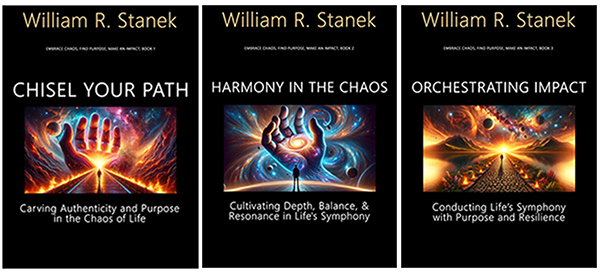
Transform your life with practical wisdom. Discover William Stanek's 'Living Well' series - your guide to a balanced and fulfilling life.
Your Support Matters
Purchasing artwork from William Stanek's collection not only brings beauty into your life but also helps us continue to share. Thank you for supporting our creative journey!
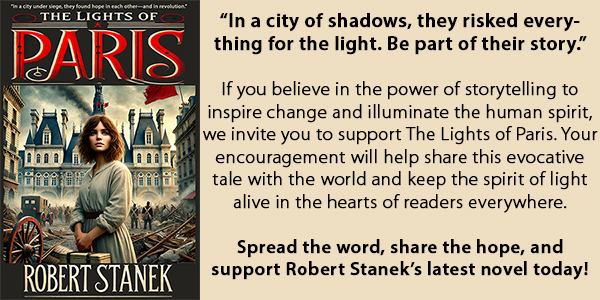
Support The Lights of Paris by Robert Stanek, William Stanek's pen name! Through vivid historical detail and deeply moving character stories, Robert takes readers on an unforgettable journey through one of history’s most transformative times.
